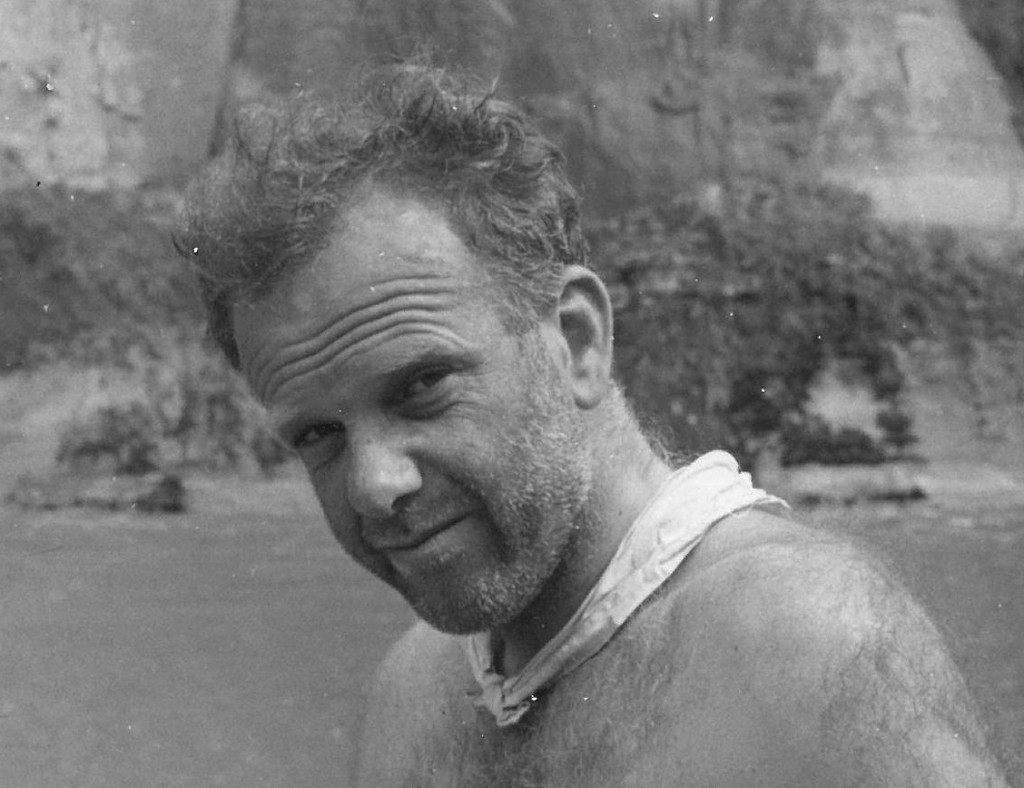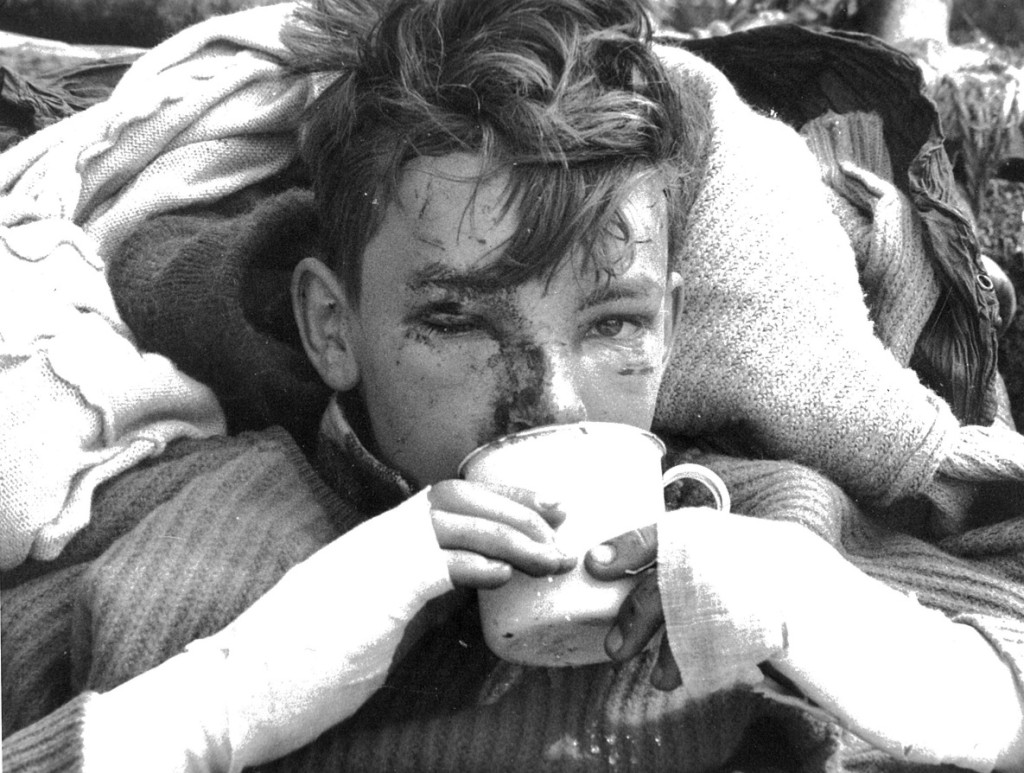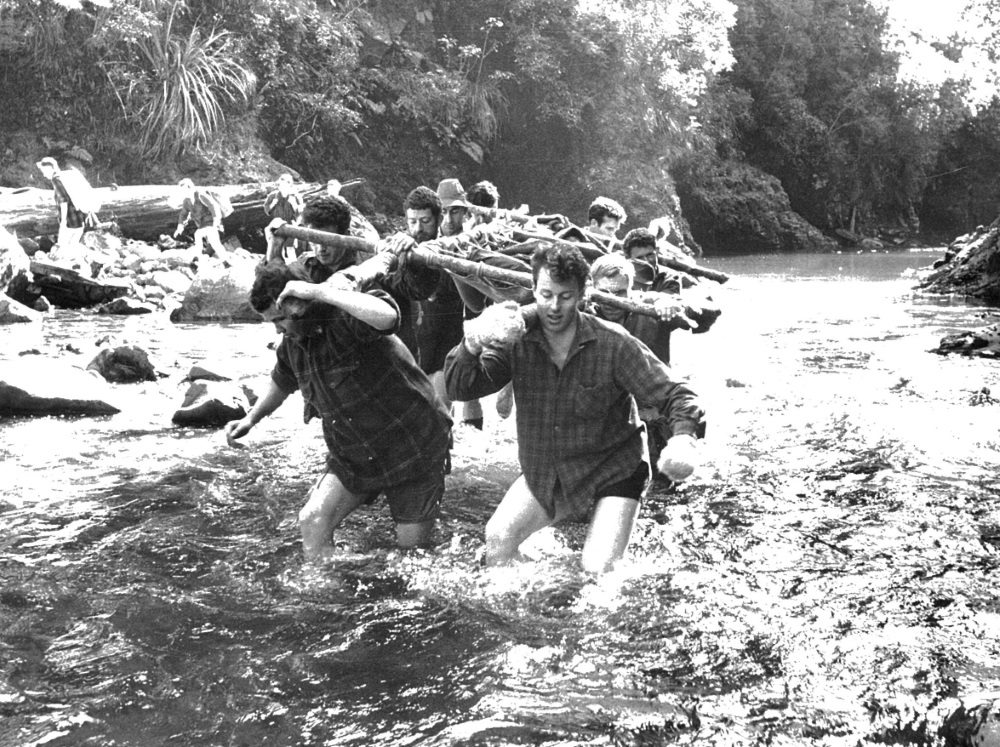
Nick Jennings’ tramping CV is impressive. The list of roles he’s performed for WTMC, Federated Mountain Clubs, Mountain Safety Council, DOC and its predecessors, and LandSAR, is extensive. Mike Gilbert spent an afternoon talking with Nick about the times and places behind the statistics.
How long ago did you start tramping?
I started in the beginning of 1948. Coming from England, the opportunity to actually get into real bush and mountains was fantastic.
The local Rover Scout crew in Island Bay had a number of members of what became the Tongue and Meats – and I just followed along essentially and that’s why I joined that club. Onslow College was another place where a lot of our original members came from, since in those early days the outdoor education thing hadn’t quite started.
You’ve been involved with the club from 1948 to the early 1970s, including 5 years as president. That’s a long run! It must’ve changed a lot in that period of time?
Every club had their own huts that they looked after, not as it is today where DOC seems to do everything. We ran regular working parties for hut and track maintenance – often as a combined clubs working party. The Wellington Associated Mountain Clubs used to coordinate that – working parties would be advertised amongst all the clubs and you’d get 60 or 80 people along to work. The sheer challenge of getting slashers and axes and so on to that many people was daunting – but it worked!
You had a lot of involvement with Search and Rescue (SAR) in those times. Who else from WTMC was involved?
Everybody! The Chief guide would work out who could do what – their competence, experience – and everybody was a volunteer.
Because of my experience I was a team leader for many of the rescues we performed.
Any rescues that stand out in your mind?
There was a light aircraft crash at the back of Paraparaumu I was involved in that was the craziest situation I’d ever been in. The police dropped us at the end of a logging track and I was coordinating the party heading in and setting up base.
I was driving back with the Police to check on a garbled radio message when we came across two people walking down the logging track – the pilot and his passenger! It was as simple as that. I got back to the road end and up to the top of the ridge and looked for the crash site – I saw a ‘discontinuity’ in the bush and that was where the crash site was. Just then, two planes appeared from the aero club and dived into the bush gully. I wondered what they were up to. Turned out they were dropping rolls of toilet paper as markers! When we got to the site, there were perfectly aimed streams of toilet paper hanging on the fuselage.
One of the most intensive rescues I was involved in was for a youngster called Bryan Carey. He’d slipped on the hard snow on Alpha whilst on a school trip. They couldn’t get down to him because it was too hard, and it’d taken a day for the school party to get out and raise the alarm.
We put an alpine group in by helicopter – the first time a helicopter had been used for this purpose in New Zealand. Meanwhile a policeman and I walked in, up that cursed Marchant Ridge. When we got there that night we discovered the alpine group had found footprints, along with one of the boys’ boots, and his pack! Turned out he’d knocked himself out when he slipped, and when he came to, he’d climbed back up and tried to walk out in what he thought was the way they’d come in. But his trail soon disappeared and we weren’t really sure of even his direction.
So we were left with having to organise a search for someone who was somewhere in the headwaters of the Tauherenikau River or the Hutt river!
I had two teams in the Hutt River and two teams in the Tauherenikau, both working their way upstream. I had another policeman at Renata hut as backup in case another team was necessary. One of the SAR stalwarts, John Patchett arrived and set up a sub-base in a forest service hut somewhere off Aston, down in the bush with a radio to add to the comms network.

24 hours later a message came through – we’ve found him! John rapidly let us know at Alpha and I sent back a message equally rapidly saying is he alive or dead?! The reply was, He’s alive! Hooray! Joe Pemberton, a WTMC member who was in a search team led by Gary Lund, had found him in the Hutt river catchment.
The next problem was how to get the boy out down the Hutt River lower gorge. A great big field stretcher was built and a tractor inner tube produced for flotation. Three carrying teams of 10 men were involved. It took a day to get him out.

He was very, very lucky. Sometimes youngsters can survive this when an adult just wouldn’t. He’d spent three days on his own, starting in the snow. He’d lost his other boot on the way too.
Another major (and successful!) search involved club member Peter Reid in the Wairarapa. Peter was in at Mid Waiohine Hut with a few other club members; they went off doing their own things on Saturday but Peter didn’t come back on Saturday night. They had a search for him on Sunday and then went out to raise the alarm.
First I knew of it was when Brian Hunt rang me to say I needed to start a search! The Masterton people didn’t seem all that bothered and he thought we needed to do something.
After a night with no sleep trying to get the logistics together and working with police, I arrived at the Wairarapa to find the search advisor ready to go. In the meantime a busload of volunteers had arrived from Wellington at Holdsworth Lodge.
We got going, and luckily after a relatively short time Peter was located walking out from the Waiohine Gorge towards Totara Flats. It turned out that he’d trodden on something that gave way underfoot, and fallen and briefly lost consciousness. He’d made his way to the Waiohine River but he couldn’t tell whether he was upstream or downstream of the hut. After walking upstream for some time he decided the hut must be in the other direction, so he turned around and headed back, until we found him.
I understand you were involved in setting up the club’s training regime?
Brian Hunt, who was Chief Guide then, tapped me on my shoulder and asked me to look after the training. This was very much in line with my training role at work, and it overflowed into my work with the Mountain Safety Council. I’d been with the Mountain Safety Council from its inception and was working on training and standards at a national level. So I did quite a lot of work on developing the WT&MC standards for bushcraft, river crossing, and other parts of bushcraft.
Who were some of the people you remember from those times?
Frank Dement was a very competent climber and tramper – he taught me a lot. We’d head out to Tetahi Bay for climbing and afterwards, he’d get tea together – for him that was working around the coast, and getting all the sea life that we could eat that evening. He also used to go over and trap in the Orongorongos out of a private hut. We’d go over there with fresh fruit and veg, and have a meal with him which was the remains of the possum stew that he’d started the previous week. A real bushman was Frank.
Bill Bridge was a former Army Captain whose specialty was mapping. He founded the Land Search and Rescue activities in New Zealand through the TTC and FMC and in association with the Police (who he joined as an Inspector when he retired from the Army). He did a very sterling job for years. Land Search and Rescue in New Zealand is essentially based on Bill’s work.
Today people have many more accessible opportunities in leisure and sport. How does tramping fit in to this today?
Tramping’s an antidote to the increasing competitiveness of both life and other sports. This is one of the few sports where you can go when you choose, where there is no regular practice and commitment and where the only competition is between you and nature. It’s up to you to make the decision whether or not to accept the challenge.
NOTE – Nick passed away on 5 December 2019 in Palmerston North, aged 89

As a Hutt Valley TC member permit me to also add my comments about Nick, to add to those of Norm Whiteside, Bruce Jefferies and others. I was aware of his passing and phoned his nephew and told there would be a celebration of his life – probably by the T&Ms in their clubrooms in January. Maybe I missed it??
I was a member of the Lower Hutt Rover Scouts in the early 1950s and Nick was the Leader of the Tararua Rovers in Trentham. He was then Safety Officer at the Dunlop Tyre Factory in Upper Hutt. The 7-8 Rover Crews in the area were very social so we had a lot to do with each other. I knew Frank Dement at the Island Bay Rovers and that Nick & others joined the T&Ms – I of course joined the HVTC….! I became pretty active in the hills, had a bit of fun in the Trampers Marathon and like Nick remained involved in the Scout movement.
When I came back from my OE in 1962 became more involved in the hills, did one of the first S-Ks, that then became Nicks obsession. We were also a group of Rovers who set up & cooked for a Bird Watchers course on Kapiti Island. We worked & drank hard – Nick invented the infamous “Nicoloskes”….! I had a lot of social interaction with the T&Ms – Brian Hunt & I used to organise the pre-ball at the Overseas Terminal before the Trampers Ball – our tickets were much sought after…!.
Over the latter years we kept in touch, I visited him up in Melrose and we had memorable lunches at The Wellington Club as guests of a mutual friend. So we all miss our good friend and mentor to many – Vale Nick.
Alan Stevens
I met Nick as a teenager in the club. I was doing a Neil Winchcomb with a school budy. Nick chased after us from Vosler Hut (near Kime) and escorted us down to Cone Hut just to make sure we didn’t do anything stupid.
On the way out to Kaitoke we came across a woman with a broken ankle. Nick organised all the trampers in the valley for a carry out to the top of the old puffer track. A remarkable man who kept on cropping up in my life.